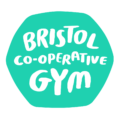In the UK, adults of working age sit down for an average of 9.5 hours each day. As we get older, this increases (source). We’ve all heard how sitting down is terribly bad for us, but what can we really do about that? Most of us are employed in ways that involve being sedentary and wouldn’t be willing or able to quit our jobs just so we can sit less.
Going to the gym and getting stronger can make a difference (a 2016 review paper found that “high levels of moderate intensity physical activity seem to eliminate the increased risk of death associated with high sitting time”), but the imbalance of time spent sitting vs. moving will mean that that activity occurs within the boundaries of reduced mobility we have developed through our time at the desk.
If we imagine sitting, we most likely think of someone at a chair with their knees and hips at ninety degrees, head slumped forward, chest down. Our bodies are fantastically adaptable and so will make themselves really good at this – we might develop a weaker bum (glutes), shorter muscles at the front of the hips (hip flexors), reduced shoulder, mid-spine and ankle mobility etc. This all makes sense, given what we’re asking our body to do – to stay in that single position for extended periods of time.
Thinking back to school, when we were first made to do this, I can remember sitting in a variety of ways – cross-legged on the floor during assembly, on one heel when I got bored in class, squatting on the playground – but now I’m less varied. We’ve grown into specialists – able to sit still for far longer than we could at school, and even choosing to do it on our lunchbreaks too, when before we would have been running around.
In one of Katy Bowman’s books, I read about a pioneering study that explored this. In 1955, the American anthropologist Gordon W. Hewes presented the results of his survey of postural habits from across the world. He had identified hundreds of different resting poses (see diagram above), including eleven using chairs.
He explained how there were various factors influencing which pose was adopted:
- Sex: pregnancy and lactation make some positions uncomfortable
- Body shape
- Taboos: fear of genital exposure
- Gender: some poses seen as masculine and others as feminine
- Clothing: restrictive clothes, revealing clothes
- Footwear: heavy boots, high heels etc.
- Artificial supports: chairs, rocks, pillows etc.
- Terrain and vegetation, if sitting outdoors
- Social class: in some places it’s “uncouth” to squat
- Fashion: some ways of sitting are cool, others aren’t
Despite finding hundreds of archetypes, he said that this body of research was still limited, partly because our paltry concepts of “standing, chair-sitting, and recumbent positions” had delayed enquiry into other ways of sitting:
“The English postural vocabulary is mediocre – a fact which in itself inhibits our thinking about posture.”
(He goes on to give an early Western shout-out to yoga – “Quite the opposite is true of the languages of India, where the yoga system has developed an elaborate postural terminology and rationale”).
He concludes with a statement that still seems relevant today: “Physiologists, anatomists, and orthopedists, to say nothing of specialists in physical education, have dealt exhaustively with a few “ideal” postures – principally the fairly rigid attention stance beloved of the drillmaster, and student’s or stenographer’s habits of sitting at desks” and speculates about what we might learn from expanding our ideas of resting postures, and how that could influence health and design.
I wanted to use this post to show how concern about our sitting habits isn’t such a new thing, even back when people were far less sedentary. We know the damage it does, but it’s very hard to avoid, given what our culture expects. If we can’t sit less, perhaps we can sit differently. While writing this article I’ve been enjoying shifting between some of the poses Hewes identified, and I think I’ll continue to do so at work. It won’t undo all of the problems with sitting, but it should avoid some of the related reductions in mobility and flexibility, and it’s quite fun too. Get some ideas from the picture and try them out!
If you’re interested in exploring this further, we’re going to be hosting a brilliant workshop all about these sorts of “lost” postures with biomechanics enthusiast and PT / Pilates Instructor Satz Owen on 22nd October. You can find out more and book on here.

